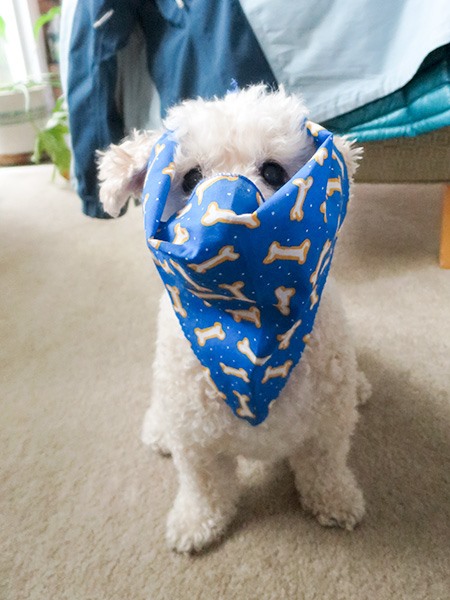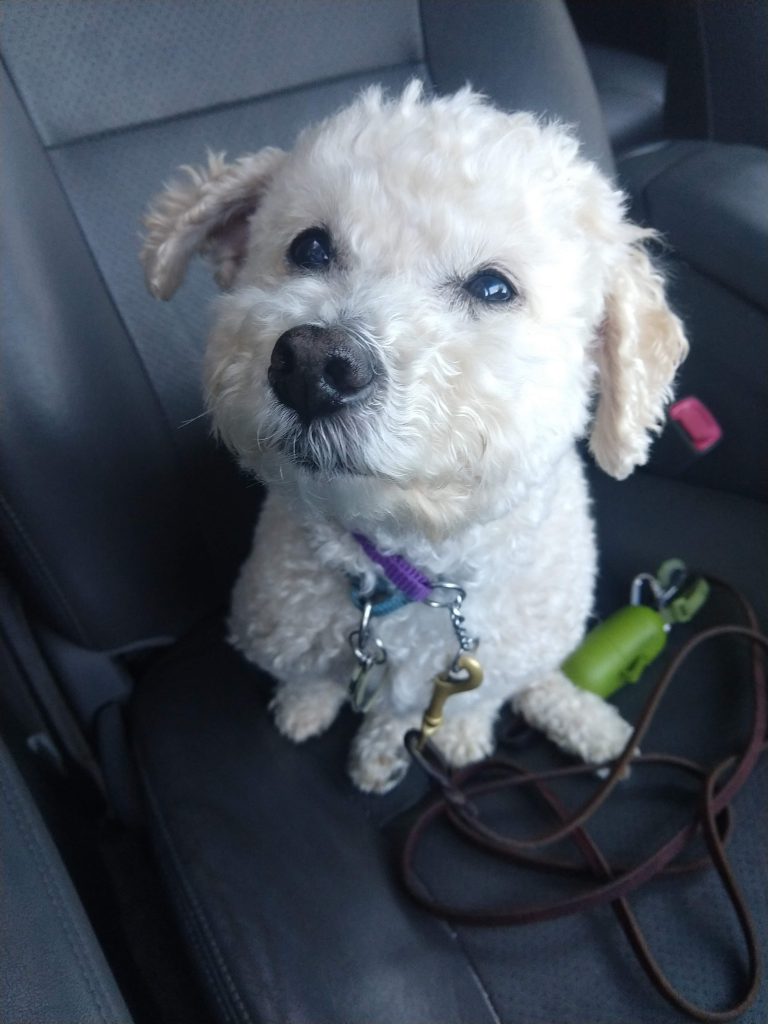Recently, I have met several dogs who are constantly jumping for attention and don’t understand how to modulate their energy. These dogs are like Energizer Bunnies that are always on the go. Their body is constantly experiencing cortisol overflow and this makes the dogs have a hard time to settle down and relax. These dogs would benefit from learning how to relax using mat settle exercise to teach them the on/off switch.
Mat settle, mat work, stationing, place, etc. call it whatever you want. This is a very useful training exercise and tool to help a dog to learn to relax and dial back on the energy powerhouse. I also think this is one of the most under-utilized and practiced behaviors when talking about obedience training by the owners. There are several benefits to teach dogs this exercise:
- When you have multiple dogs in the household, teaching the dogs to got to their mats help ensure safe space from each other so you can manage resource guarding or a young jumpy puppy annoying a slow/senior dog.
- With a designated location (mat or platform), it serves as a visual cue to the dog so they can stay within the boundaries. This would help when working with dogs who lack of impulse control and always want to chase moving objects.
- For a shy/fearful dog, this serves as a safety blanket/safe zone. When the dog is in the zone, he learns he can be relaxed and feel safe. The owners is responsible to ensure the safety of the dog in the zone. It also serves as a visual boundary so people walking by can be aware of the space without getting too close to the dog.
- When you have a busy-buddy dog who is always ON, this teaches the dog to relax on the mat thus he can get into a relaxed state faster. It is also a good default behavior for a dog to learn so that he doesn’t always need to participate in action or seek attention from others.
- You can certainly use the location of the mat to teach your dog positioning in other more advanced training.
- For a Service Dog team, this is an important default behavior while in the public so they can be calmly staying by their handler’s side without interrupting others.
There are many ways to teach the mat settle exercise. The detailed version is explained in Dr. Overall’s Relaxation Protocol (you can do a simple Google search to find the info). I usually start with a simple treat tossing onto the mat/bed to introduce the mat settle exercise. There are two key concepts: (1) reward the dog when he’s on the mat. This makes staying on the mat valuable. (2) place the reward treats on the mat without using a clicker/marker. This is to encourage the dog to relax. The licking behavior is also a self-soothing behavior. This helps to get the dog into a relaxation state quicker than just rewarding the staying on the mat itself.
Fenix is a dog who always seeks attention and he doesn’t know how to relax. His mom told me that he would never relax and didn’t know how to stay on his bed. We worked on the mat settle exercise in our first session. Within 15 minutes, Fenix started to offer a down behavior on his mat. By the end of the session, he preferred to stay on his mat rather than jumping on me for attention or to earn his treats. His mom worked diligently with him after our session. His mom shared these photos and was impressed on how Fenix has mastered the relaxation; not only would Fenix choose to go onto to his bed without being told, he is also showing more relaxed body posture while he is on his bed. This gives his mom more free time to focus her attention at work rather than constantly trying to find ways to manage Fenix or find outlets to entertain Fenix.

Kalani is another dog who benefits from mat settle exercise. Kalani is food motivated. But sometimes her eagerness for food leads to competing for free food when there are other dogs nearby. In the video, we worked on ignoring the food tossed on the ground. She worked on staying on her mat and ignore free food. Her reward comes from mom hand-delivers yummy treats to her!







